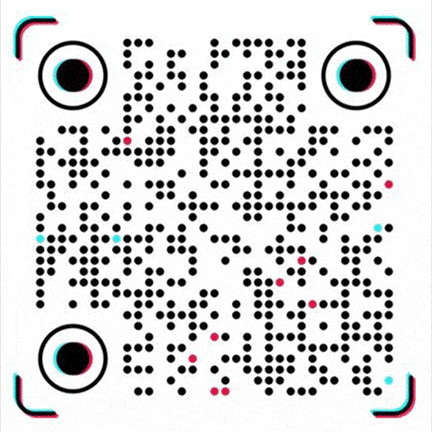Polyester: Under the Upstream and downstream Pressure, the Polyester Market is Weak and Difficult to Improve
Polyester: Under the Upstream and downstream Pressure, the Polyester Market is Weak and Difficult to Improve
Introduction: Since late September, the domestic polyester market has been in a continuous trend of volatility and correction. With the polyester raw material PTA and ethylene glycol market continued to decline, and without cost support, the polyester market is gradually declining. In addition, with the upcoming off-season of terminal demand, market confidence is insufficient, making it difficult for the domestic polyester market to break away from the weak situation.

Since September 18th, the polyester industry market has gradually retreated from high levels. The high volatility of international crude oil has intensified, especially since the Israeli-Palestinian conflict. Traders have become increasingly concerned about whether the Middle East war can expand to oil producing areas and cause supply disruptions. International crude oil prices fluctuate frequently, exacerbating the uncertainty of the domestic commodity market atmosphere. The overall atmosphere of the commodity market is weak, and the polyester raw material PTA and ethylene glycol futures market is fluctuating and rebounding. Since October, there has been an increase in the maintenance of PTA devices in China, and the overall industry operation has dropped to over 70%. The ports inventory of ethylene glycol continues to decrease, and the supply of polyester raw materials in the market has decreased. However, the downstream polyester load has slightly rebounded to a high level around 90%. The overall supply and demand side of polyester is improving, but the market has a strong bearish mentality, and the production and sales of enterprises are weak, which has put pressure on the polyester market. The polyester market is in a trend of volatility and correction. As of the 23rd, the spot price negotiation in the PTA market has dropped to around 5720 yuan/ton. This week and next week, there will be transactions and negotiations for the delivery of 01 liters of water at around 20-25 yuan in the main port. The quotation for ethylene glycol in East China is around 3960 yuan/ton.
| Polyester products | 2023/10/23 | 2023/9/15 | Exchange amount | Exchange rate |
| PTA | 5720 | 6445 | -725 | -11.25% |
| Ethylene glycol | 3960 | 4205 | -245 | -5.83% |
| Polyester cost | 6200 | 6839 | -639 | -9.34% |
| Polyester chip | 6735 | 7300 | -565 | -7.74% |
| Bottle grade PET chips | 6825 | 7250 | -425 | -5.86% |
| Polyester filament POY | 7525 | 8200 | -675 | -8.23% |
| Polyester staple fiber | 7425 | 7975 | -550 | -6.90% |
With the pullback in market prices of polyester raw materials PTA and ethylene glycol, the production cost pressure of polyester enterprises has been reduced, and the decline in the domestic polyester market is smaller than the decline in the raw material market. Therefore, the overall profit level of domestic polyester enterprises has slightly rebounded. Currently, only bottle grade polyester chip enterprises are still in a loss state, while polyester filament enterprises are in a low profit state, and the profits of polyester staple fibers and polyester chips remain low and fluctuating. As of now, the profit of polyester chip products is 185 yuan/ton, profit of bottle grade polyester chip product is -125 yuan/ton, profit of polyester filament product is 70 yuan/ton, and profit of polyester staple product is 220 yuan/ton.
After the Asian Games, polyester enterprises reduced production or gradually shut down their facilities in the early stage, and the overall operation of the polyester industry steadily rebounded. However, due to the continuous losses of bottle grade polyester chip enterprises, the reduction and shutdown of these facilities increased, suppressing the overall increase in operation of the polyester industry. Currently, the polyester industry is operating at around 90%. The main reason for polyester enterprises to maintain a high production load is that their inventory pressure is relatively low. Despite frequent market fluctuations, polyester enterprises have improved their production and sales by reducing prices and promoting sales. Therefore, polyester enterprise inventory has been maintained at a reasonable and controllable level. As of last weekend, the inventory of polyester POY factory was 15-17 days, FDY factory inventory was 20-22 days, DTY inventory was 27-29 days, and polyester staple fiber factory inventory was 7-10 days. Under no significant sales pressure, polyester enterprises have high production enthusiasm.
At present, the terminal textile industry is still in the peak consumption season, with the comprehensive production of weaving still remaining at around 80%, the production of texturing enterprises around 85%, and the production of printing and dyeing enterprises also maintaining around 80%. The terminal textile industry has maintained a high production level. But with the deepening of the off-season atmosphere, market orders have slowed down, and there are expectations of a gradual decrease in weaving load in the later stage, which has put pressure on the market mentality.
The international crude oil market fluctuates at high levels, and the polyester raw material PTA and ethylene glycol market are driven by the cost side. In the short term, the market will maintain a narrow adjustment. Under cost pressure, the profits of short-term polyester enterprises will maintain low fluctuations. However, with the end of the traditional peak season of terminal demand and the expectation of weak demand, the polyester market will still face significant pressure in the later stage. Pay close attention to the changes in the raw material market and demand side in the later stage.
- Bottle Grade PET Chips: The Industry Witnessed an Increased Device Maintenance, and Its Operation Falling to a New Low6649
- Polyester: Terminal Off-season is Approaching, and Market is under Pressure6711
- Polyester: Under the Upstream and downstream Pressure, the Polyester Market is Weak and Difficult to Improve6705










